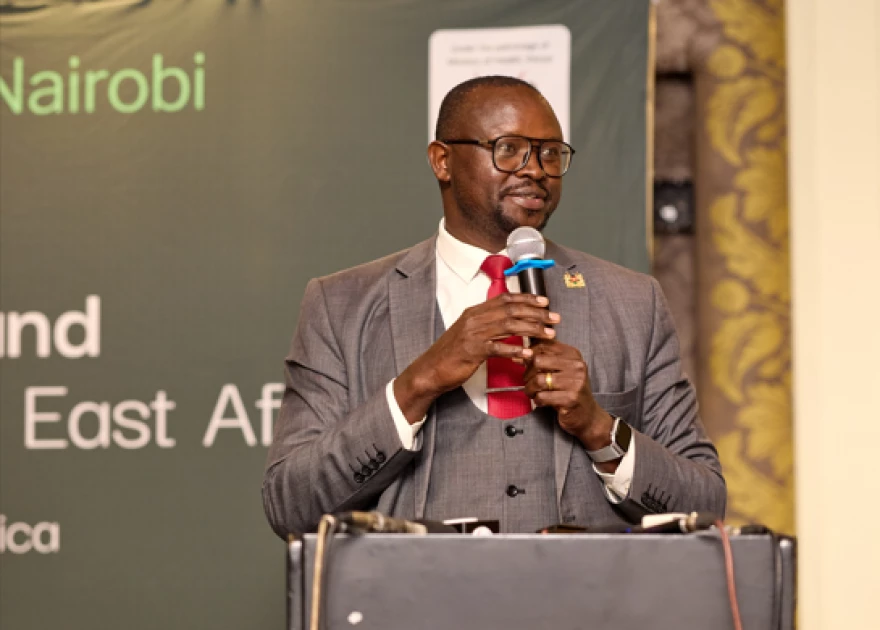Kenya rallies partners to drive primary healthcare through the Digital Health Triangle

Dr. Joe Lenai, Director for Primary Healthcare, Preventive and Promotive Health, Ministry of Health, Kenya.

Audio By Carbonatix
Kenya is stepping up its bid to become East
Africa’s hub for healthcare innovation, using a new systems lens—the Digital
Health Triangle—to accelerate Universal Health Coverage (UHC) through stronger
primary healthcare and targeted digital solutions.
At a high-level
WHX networking event in Nairobi, senior government officials, health NGOs and
private-sector leaders discussed how future health systems in the region will
need to be digital, decentralised and built through collaboration. Participants
warned that progress now depends on fresh investment and partnership models
that deliver tangible results at the community level.
“With overseas development funding on the decline, it’s time for the private sector to step in as both investors and innovation partners,” said Kenya's Principal Secretary (PS) for Public Health Mary Muthoni.
“The future of universal healthcare depends on how well we collaborate across sectors, especially in the face of challenges like climate change.”
She added that accelerating digitisation in primary care
is essential and called on the private sector to support digital transformation
at the community level.
Kenya’s
momentum is driven by policy reforms, pilot programmes and a growing healthtech
ecosystem that extends services beyond urban hospitals into rural clinics,
homes and mobile devices. From AI-assisted diagnostics to mobile-based patient
records, technology is helping to connect previously fragmented services into
more integrated systems.
PS Muthoni
pledged the Ministry’s support for WHX and similar initiatives. “As both a
public official and a passionate advocate for accessible health services, I
welcome partnerships that align with our goal of achieving Universal Health
Coverage. Government cannot do it alone; we need every hand on deck.”
Amref Health Africa, which delivers services to millions of people across the continent, underlined the importance of sustained partnerships.
“Our journey with WHX began in Kigali in 2023, and for the past three years, we’ve built a partnership rooted in shared values around innovation and community-driven care,” said Corazon Aquino, Acting Global Director for Partnerships and External Engagement at Amref Health Africa.
“Our partnership with WHX has allowed us to engage deeply on themes like innovation in primary healthcare and inclusive digital solutions for underserved populations.”
She said Amref looks
forward to continuing the collaboration, including at WHX’s next event in
October.
The WHX
Nairobi forum was positioned as a meeting point for policy ambition and market
execution. Organisers said the event offers a space for healthcare stakeholders
to explore new ideas, forge partnerships and advance health innovation in the
region.
Central to
the discussions was the Digital Health Triangle, a framework that brings
together UHC, strong primary healthcare systems and digital health innovation.
UHC provides the policy imperative of ensuring health for all without financial
hardship. Primary healthcare keeps the system people-centred and
prevention-focused, while digital tools and platforms enable scale, efficiency
and responsiveness to local contexts.
“When we talk
about transforming healthcare in Africa, it really comes down to strong primary
care systems, universal access without financial hardship, and digital
innovation that connects it all,” said Tom Coleman, Portfolio Director at
Informa Markets. “Each one supports the others. Without that balance, we won’t
get the scale or sustainability we need.”
The Nairobi discussions reflected a wider recognition that as donor funding shrinks and climate-related pressures mount, countries need cost-effective and resilient health models. Kenya’s blend of policy direction and private-sector involvement offers a locally grounded path to digital-first, prevention-led healthcare.
The
next step, speakers agreed, is to move proven solutions from pilot projects
into broader systems, ensure investment reaches underserved areas, and adopt
common standards for data and technology so that innovations work seamlessly
across the health sector.


Leave a Comment